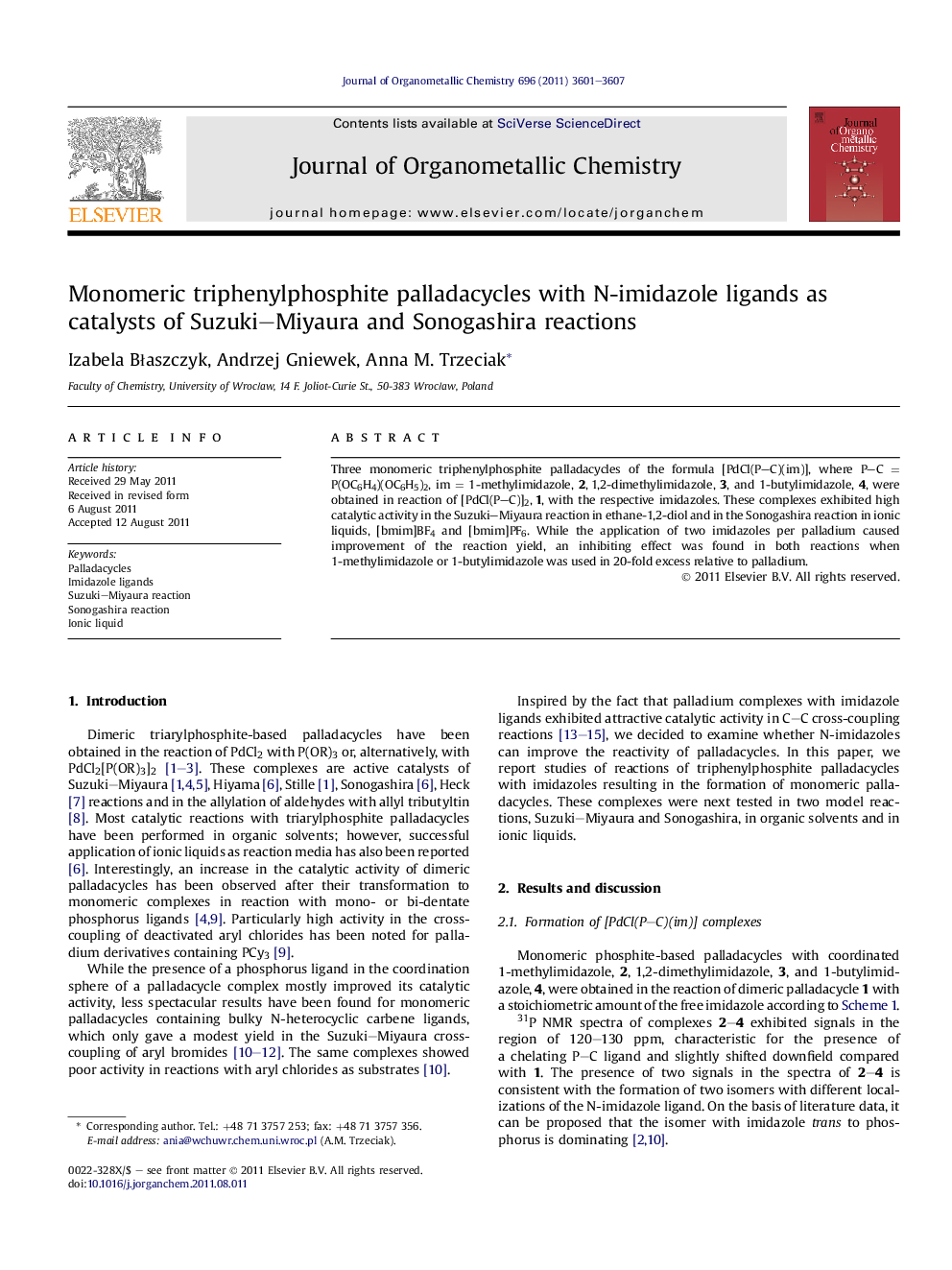| Article ID | Journal | Published Year | Pages | File Type |
|---|---|---|---|---|
| 1325094 | Journal of Organometallic Chemistry | 2011 | 7 Pages |
Three monomeric triphenylphosphite palladacycles of the formula [PdCl(P–C)(im)], where P–C = P(OC6H4)(OC6H5)2, im = 1-methylimidazole, 2, 1,2-dimethylimidazole, 3, and 1-butylimidazole, 4, were obtained in reaction of [PdCl(P–C)]2, 1, with the respective imidazoles. These complexes exhibited high catalytic activity in the Suzuki–Miyaura reaction in ethane-1,2-diol and in the Sonogashira reaction in ionic liquids, [bmim]BF4 and [bmim]PF6. While the application of two imidazoles per palladium caused improvement of the reaction yield, an inhibiting effect was found in both reactions when 1-methylimidazole or 1-butylimidazole was used in 20-fold excess relative to palladium.
Graphical abstractMonomeric complexes of the formula [PdCl(P–C)(im)], where P–C = P(OC6H4)(OC6H5)2, im = 1-methylimidazole, 1,2-dimethylimidazole, 1-butylimidazole, were obtained in reaction of dimeric palladacycles [PdCl(P–C)]2 with the respective imidazoles. These complexes exhibited high catalytic activity in the Suzuki–Miyaura reaction and in the Sonogashira reaction in ionic liquids. Homogeneous Pd(0)/Pd(II) mechanism was proposed.Figure optionsDownload full-size imageDownload as PowerPoint slideHighlights► Synthesis of new monomeric triphenylphosphite palladacycles with N-imidazole ligands. ► Application of these complexes as the catalysts of Suzuki–Miyaura reaction. ► Development of an efficient protocol for Sonogashira reaction in ionic liquids. ► Influence of the imidazoles on the catalytic activity of the described systems.
